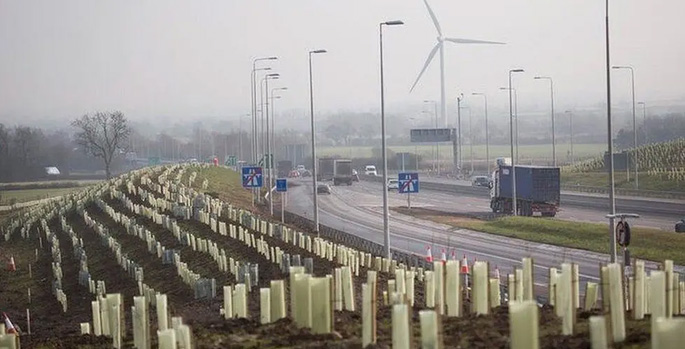National Highways has hit the headlines again over ongoing issues with tree planting on the A14, which have seen hundreds of thousands of saplings die and local residents take matters into their own hands to tackle 'what looks like a desert'.
During the completion of the £1.5bn A14 upgrade project in 2020, over 860,000 trees were planted alongside the busy A road.
In 2023, Sky News reported that a National Highways internal review suggested they had suffered 'an unusually high fatality rate' and revealed that three-quarters of them have died.
National Highway has stated that, between October 2024 and this April, a further 165,000 shrubs and trees were planted with nearly 90% surviving.
However, this week the BBC reported that Cambridgeshire County Council is still unhappy with the situation, having raised concerns that it does not know where the new trees are.
Alex Beckett, the chair of the committee, said areas of the A14 'still look like a desert' even though the trees 'should be thriving'.
He added that it was 'incredibly frustrating' National Highways had not provided detailed evidence on: why the initial planting failed, where the new trees were planted, the results of surveys and an improved planting plan to ensure better success.
These ongoing issues have seen local residents start planting their own trees to fill the spaces.
As previously reported in Highways, there are several factors that can impact the success of tree planting, including the timing, understanding how to work with your location, what species to choose and how to protect the saplings.
A National Highways spokesperson said: 'We take our responsibility to the environment very seriously. The A14 upgrade project was not limited to just improving the road; our ongoing environmental work remains a long-term project that we will continue to monitor and support.
'Between October 2023 and April 2024 – the optimum planting season – 165,000 trees and shrubs were planted. These comprised 16 different species specially selected to enhance the surrounding areas and habitats. Our latest survey showed that nearly 90% of these trees have survived.'
Image credit: National Highways






